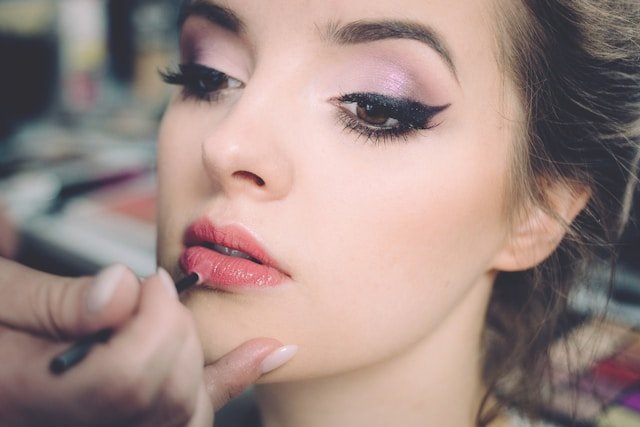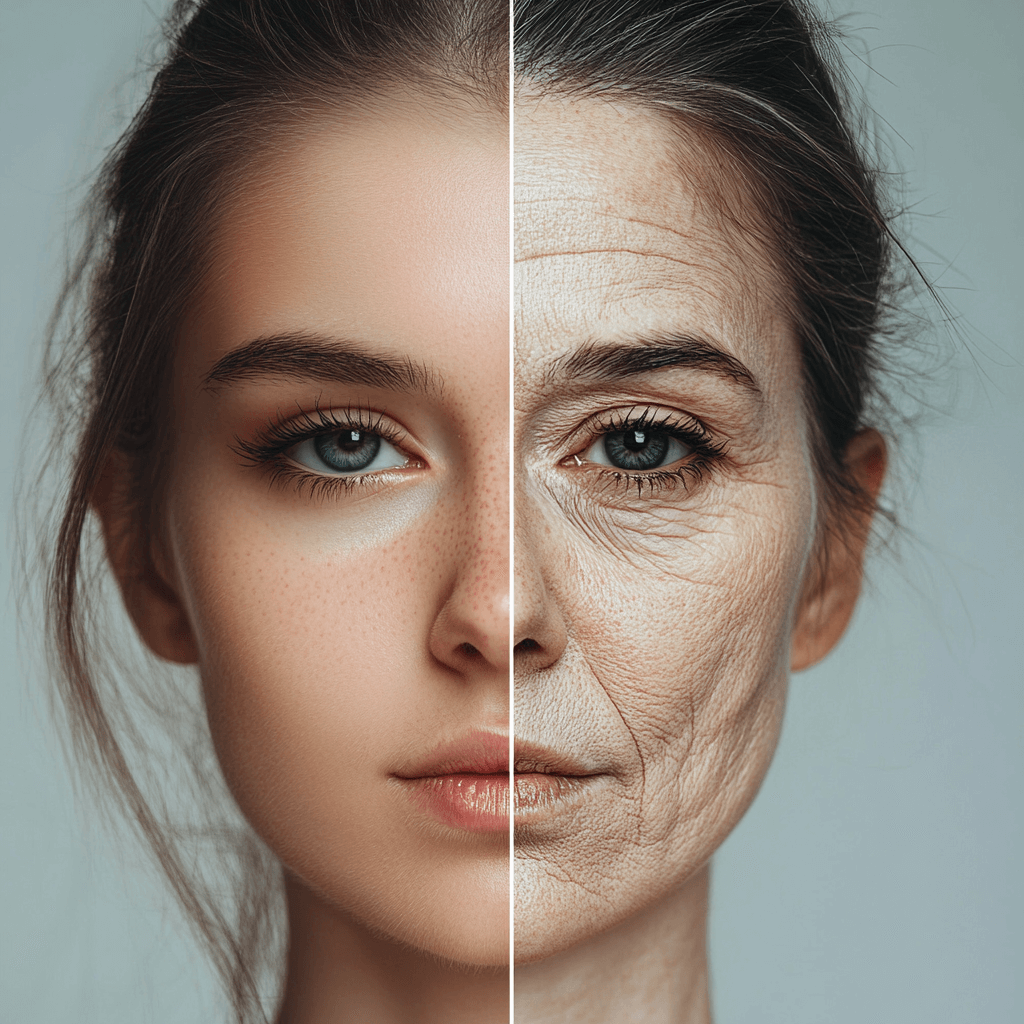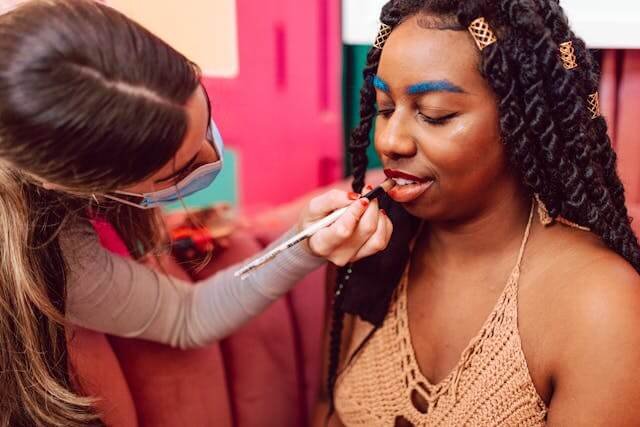Physical Address
304 North Cardinal St.
Dorchester Center, MA 02124
Physical Address
304 North Cardinal St.
Dorchester Center, MA 02124

I never thought I’d be the kind of woman who’d fall into the beauty trap. Growing up, I’d roll my eyes at those glossy magazine covers, the ones with airbrushed faces and headlines screaming, “Defy Your Age!” I’d see women with frozen expressions—cheeks so tight they couldn’t smile, brows that didn’t budge—and I’d think, “Why would anyone do that to themselves?” But life has a way of humbling you.
One chilly morning in late 2023, I stood in front of my bathroom mirror, the fluorescent light buzzing faintly overhead, and I saw something that stopped me cold. It wasn’t just a new wrinkle or a sagging jawline. It was the feeling that the face staring back at me didn’t match the person I still felt I was inside.
I pressed my fingers to my cheeks, the skin cool and slightly tacky from the moisturizer I’d just applied. I pulled gently, lifting the corners of my eyes, smoothing out the lines around my mouth. For a fleeting second, I saw her—the version of me I remembered.
The one with lifted brows, a sharper jaw, a neck that didn’t betray the years. I tilted my head, wondering what it’d be like if the skin on my chest didn’t sag, if it bounced back with a little more life. I didn’t want to be someone else. I just wanted to feel like myself again. That’s when the whisper started, soft but persistent: Maybe there’s something you can do.

I wasn’t obsessed—at least, not at first. I was just… curious. I started searching online, scrolling through endless articles about anti-aging treatments. Botox, dermal fillers, PRP therapy, mesotherapy, thread lifts, radiofrequency, ultrasound facials, vitamin infusions, microneedling, LED light therapy, and even facial harmonization packages promise a “non-invasive transformation.” They all sounded so simple, so harmless. “Just a touch,” the websites promised. “You won’t even notice.” But you do notice. Because it becomes a cycle.
I booked my first Botox appointment in January 2024 at a sleek clinic downtown. The receptionist smiled at me with lips that looked like they’d been pumped full of filler, and the doctor—a man in his 50s with suspiciously smooth skin—assured me it’d be quick. “You’ll love the results,” he said, his voice as smooth as his forehead.
The needle stung as it went in, a sharp pinch above my brow, but I barely flinched. I wanted this. I needed this. Three days later, I looked in the mirror and smiled. The lines were gone. I felt… lighter. Younger. But Botox only lasts four months. Fillers fade. Collagen boosters need sessions. The high wears off, and you go back, chasing that first feeling. One treatment became two, then five. I was hooked.
As I fell deeper into the beauty standards trap, I started noticing something. The women I saw on TV, the ones on red carpets, the ones whose names we all know—they didn’t just look good for their age. They looked 20 years younger than they should. Take Demi Moore, for example. At 61, she looks like she could pass for 40. How? I started digging, and what I found made my stomach turn. There are treatments out there—things you won’t find at your local med spa. Experimental stem cell therapies that regenerate skin from the inside out. Blood plasma infusions that cost more than a car. Gene-editing injections that tweak your DNA to slow aging at the cellular level.
I read about clinics in Switzerland where the elite fly in on private jets for “longevity programs” that aren’t even legal in most countries. According to a 2023 report from Forbes, the global anti-aging market is expected to reach $93 billion by 2027, and a big chunk of that comes from exclusive treatments the average person will never hear about.
These aren’t just Botox or fillers—they’re the kind of sci-fi stuff that’s decades ahead of what’s available to us. And the elite don’t talk about it. They’ll smile for the cameras and say, “Oh, I just drink a lot of water and get my sleep,” while their teams of doctors and scientists work in the shadows. It’s a secret club, one you need a seven-figure bank account to join.

Let me paint you a picture. Imagine a woman named Elena, a 55-year-old heiress living in a penthouse in London. She’s part of the elite, the kind of person who gets invited to galas where the champagne costs more than my rent. Every six months, she flies to a private clinic in Zurich, not the kind you can Google. The clinic doesn’t have a website, just a discreet phone number passed around in hushed tones at exclusive parties.
There, she undergoes a treatment called “cellular rejuvenation.” It’s a mix of stem cell therapy and gene editing, designed to rewind her biological clock. The procedure costs $150,000 a session, but to Elena, it’s pocket change.
She walks out with skin that glows like she’s 30, her energy levels through the roof, her body defying time. She doesn’t tell a soul—not her friends, not her family. When someone compliments her, she laughs and says, “Good genes!” But her eyes flicker with the truth: she’s bought her youth, and the price isn’t just money.
Meanwhile, women like me are left with the scraps. We’re sold the lie that if we just try hard enough—if we buy the right cream, book the right appointment—we can look like Elena. But we can’t. Because the game is rigged. They’re playing with a different deck—one we’ll never even see.
What Demi Moore’s Film Taught Me
I couldn’t stop thinking about a film I watched recently—The Substance, starring Demi Moore. If you haven’t seen it, it’s a body horror satire that came out in 2024, directed by Coralie Fargeat. Demi plays Elisabeth Sparkle, a fading celebrity who’s told she’s too old to matter anymore. So she uses this black-market substance to create a younger version of herself—a perfect, flawless clone played by Margaret Qualley.
At first, it seems like the answer to everything. The clone is everything Elisabeth isn’t: youthful, desirable, relevant. But it’s not that simple. The two versions of her start to unravel, fighting for control, tearing each other apart in the most gruesome way. It’s a horror movie, but it felt so real.
The film hit me hard because it’s exactly what I’d been feeling. I wasn’t cloning myself, but I was injecting, filling, lifting, trying to create a version of myself that the world would still love.
In the process, I was losing who I really was. In The Substance, the treatment isn’t something you can just buy, it’s exclusive, dangerous, something only the desperate and the powerful would even know about. It made me think of the elite again—those secret therapies they use to stay 20 years younger while the rest of us are left with treatments that fade in months.
The movie isn’t just a horror story—it’s a mirror, showing us how far we’re willing to go and how the system is built to make us feel like we have to.

Let’s imagine for a moment that The Substance isn’t just fiction. What if there really was a treatment like that—a black-market serum that could create a younger version of you? In my fictional world, it exists, and it’s called “Eterna.” It’s a closely guarded secret among the elite, developed in a lab in Singapore and only available to those who can pay the $1 million price tag.
A woman named Clara, a 48-year-old actress struggling to book roles, hears about it through a shady contact in the industry. She sells her car, takes out a loan, and buys a single vial of Eterna. The instructions are simple: inject it, and within 72 hours, you’ll shed your old skin—literally—and emerge as a younger version of yourself.
Clara does it, and it works. She looks 25 again, her career skyrockets, and she’s the talk of Hollywood. But there’s a catch: the younger version starts to take over, draining Clara’s energy, her memories, her identity. She’s trapped in a body that’s hers but isn’t, a prisoner of her own desperation.
For me, the cost wasn’t a fictional serum—it was real, and it was heavy. By mid-2024, I’d spent over $5,000 on treatments. My face looked… different. Smoother, yes, but also strange. My cheeks were too full, my jaw too sharp. I’d smile, and my eyes wouldn’t crinkle the way they used to.
Friends would say, “You look so fresh!” but I could hear the unspoken question: “What’s your secret?” The secret was shame. I was ashamed of how far I’d gone, ashamed of the bruises under my makeup, the swelling I hid with sunglasses. I was ashamed that I couldn’t smile without feeling like a mask.
I started comparing myself to women on screens, women who never seemed to age. I’d tug at my skin in the mirror, wondering how far I’d go if I had more money, if I had more courage. The truth hit me slowly: I wasn’t failing to reach beauty.
The system was designed to make me feel like I never could. Anti-aging treatments aren’t about looking better—they’re about keeping you insecure. “Just a little more,” the doctors would say. “Maybe a jawline filler to match your face.” But my face still showed the years because it was supposed to.
It’s not just about vanity. It’s about fear—fear of aging, fear of being invisible, fear of becoming irrelevant. Society doesn’t celebrate aging, especially for women. We’re told we have the power to age “gracefully,” but the truth is, grace isn’t profitable. Fear is. Insecurity is. And the beauty industry knows exactly how to market both.
According to a 2022 study by the American Society of Plastic Surgeons, over 1.5 million Botox procedures were performed in the U.S. alone that year, with women making up 92% of the patients.
The industry thrives on our fear, and the elite’s access to exclusive treatments only widens the gap. They’ve created a new class system made of youth, where those with money and connections can buy their way out of aging, while the rest of us are left chasing an illusion.

One day, I stopped. I didn’t pull my skin back to imagine a younger version of myself. I didn’t book another appointment. I just stared at my reflection—really stared. Not because I loved what I saw, but because I was exhausted.
Exhausted from chasing beauty like it was a finish line I could cross. Exhausted from the swelling, the bruises, the stiffness that made it hard to smile. Exhausted from pretending the procedures didn’t hurt, that they made me feel “better.” I still felt like a ghost with perfect cheekbones.
The truth hit me: I wasn’t failing to reach beauty. The system was designed to make me feel like I never could. I decided I was done. Done injecting silence into my face to fit in. Done believing beauty comes from pain.
Maybe I’ll never look like the women on the red carpet, and maybe the lines on my face will deepen. But at least I’ll know I’m not losing myself to a dream that was never mine.
I’m curious—what about you? Have you ever felt this pressure to look a certain way? Have you fallen into the beauty standards trap, chasing anti-aging treatments that promise the world but leave you feeling empty?
Let me know in the comments, I’d love to hear your story. And if you’re watching this on my website, check out my other posts on self-acceptance and the truth behind the beauty industry. Let’s start a conversation about what beauty really means.